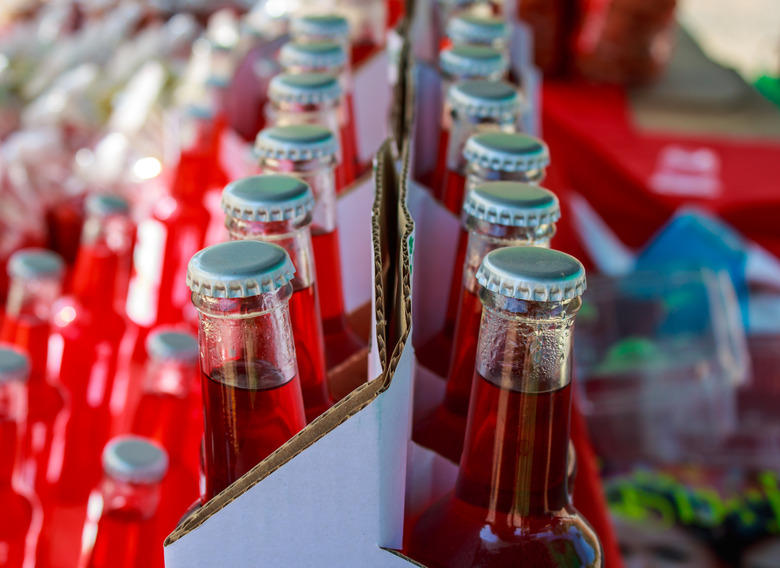What Is A Saturated Solution?
In chemistry, you often encounter solutions of liquids, solids or gases. A solvent, such as water, dissolves a solute, such as table salt. When you add so much salt that no more can dissolve, chemists refer to the solution as being saturated. The reasons why some solutions become saturated and others don't have to do with factors that include the temperature of the solution and the types of substances involved. It's safe, easy and interesting to demonstrate saturation effects with common materials found at home.
TL;DR (Too Long; Didn't Read)
A saturated solution is one that cannot dissolve any more of the substance that is mixed into it.
Under Pressure: Dissolved Gases
Under Pressure: Dissolved Gases
Carbonated drinks such as soft drinks are bubbly because carbon dioxide gas is dissolved under pressure in the liquid at the bottling plant. If you look at a transparent sealed bottle of soda, there's little or no bubbling going on, but take off the cap and you release the pressure. The bottle makes a brief hissing sound as the released gas escapes. Under normal room air pressure, the soda can no longer hold all the dissolved CO2, and the gas bubbles out. If you pour sugar into an open soda bottle, it foams and bubbles vigorously as the extra sugar dissolves into the soda, forcing the remaining CO2 out.
Oil and Water: No Solution
Oil and Water: No Solution
It's common knowledge that cooking oil and water don't mix. If you fill a glass three-fourths full with water and add some cooking oil, you see two distinct layers – one of water and the other of oil. You can stir the mixture, but when it settles down, it separates into layers again.
Making a Saturated Solution
Making a Saturated Solution
Fill a glass three-fourths full with room temperature tap water and set aside a small container of table salt. Put a pinch of salt into the water and stir with a spoon for a few seconds until the salt dissolves. Keep adding salt in this manner, one pinch at a time with a good stir. By the time you've added a little more than a tablespoon of salt to the water, you'll notice that the salt starts settling to the bottom of the glass. The salt you see is undissolved, meaning the liquid has reached the saturation point. The salt you add after this point ends up on the bottom of the glass; the water cannot dissolve any more salt.
Temperature, Pressure, and Solubility
Temperature, Pressure, and Solubility
Temperature and pressure affect solubility in water, but the effect varies from one substance to another. For example, water dissolves less of a gas as temperature rises, and more of a gas dissolves when pressure rises. Some salts dissolve more in hot water than cold, though with others, the effect is the opposite.
Miscible Substances: No Saturation
Miscible Substances: No Saturation
When you can mix two substances in any proportion, and they never reach saturation, chemists consider them to be miscible. One example involves two gases, such as oxygen and nitrogen. They don't form two distinct blobs of gas; the two gases mix freely. Another example is water and most alcohols. When mixed in nearly any amount, one will dissolve into the other.
Cite This Article
MLA
Papiewski, John. "What Is A Saturated Solution?" sciencing.com, https://www.sciencing.com/what-is-a-saturated-solution-13710221/. 15 March 2018.
APA
Papiewski, John. (2018, March 15). What Is A Saturated Solution?. sciencing.com. Retrieved from https://www.sciencing.com/what-is-a-saturated-solution-13710221/
Chicago
Papiewski, John. What Is A Saturated Solution? last modified March 24, 2022. https://www.sciencing.com/what-is-a-saturated-solution-13710221/
